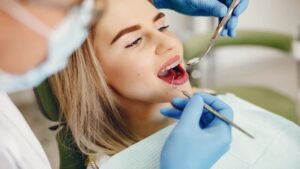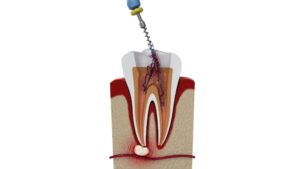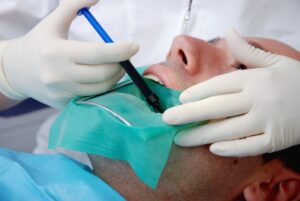If there’s one thing worse than missing teeth, it’s figuring out what to do about it. If you count yourself among the 120 million Americans who are missing at least one tooth, or the estimated 36 million who have none at all, you’re all too aware that the struggle is real.
You know that dentures are a lot different today than in your grandfather’s time, and you’ve heard that the gold standard for replacing missing teeth these days is dental implants, but you’re a want-it-yesterday person, and getting implants takes months.
Think overdentures, say Sargon Lazarof, DDS, and Dan Dansie, DDS, here at Sargon Dental, which has offices in Encino and West Hollywood, California, and Pleasant Grove, Utah. Take a moment as we explain what overdentures are and how they may solve the dilemma of replacing your missing teeth.
Overdentures explained
Overdentures, sometimes called snap-on dentures or implant-supported dentures, attach to dental implants. In contrast to dentures that rest on gum tissue, overdentures are anchored using dental implants, which provides stability as well as comfort.
Essentially, overdentures are the quintessential mash-up between traditional dentures and dental implants, but without any of the concerns about slipping and sliding, the need for gooey adhesives, or in the case of dental implants, months and months of waiting to complete the process.
A good candidate for overdentures has sufficient bone density to support implants and is missing most or all of their teeth.
All-On-4® implants versus traditional implants
Here at Sargon Dental, we offer our patients a unique system of overdentures called All-On-4 implants. To best understand the benefits of the All-On-4 implant, let’s take a step back and explain the traditional dental implant process.
Once Dr. Dansie deems you a good candidate for dental implants, he begins the in-office surgical process by making a small incision in your gum and drilling a tiny hole in your jawbone. He then places a titanium post for each missing tooth and closes up each incision.
Dr. Dansie sends you home with post-op recovery instructions, and the healing process begins. Over the next several months, the implants fuse to your jawbone and heal in place, a process known as osseointegration.
When healing is complete, you return to the office. During this step, Dr. Dansie places an abutment to each implant. This small post eventually holds your restoration, typically a crown, bridge, or dentures.
After Dr. Dansie places the abutments, the Sargon Dental team takes an impression of your mouth. The data they collect is used to fabricate your restoration. When the restoration is ready, Dr. Dansie permanently bonds it to your abutment, and your dental implant process is complete.
The All-on-4 difference
All-on-4 is consistent with the traditional dental implants treatment plan, but with one game-changing difference. As the name implies, instead of placing one titanium post for each missing tooth, the All-on-4 implant system requires only four implants to replace an entire top or bottom arch.
Furthermore, while All-On-4 provides the same natural look and long-lasting durability as traditional dental implants, it’s a less invasive surgical option because of those fewer incisions. That means a quicker recovery and a lower risk of surgical complications.
The ultimate one visit do-over
Here at Sargon Dental, we take it one step further. Since we have an on-site dental laboratory, we can fabricate your custom overdentures right in our office and can complete the treatment process in one appointment.
Dr. Dansie begins the appointment by conducting an oral exam and taking a series of digital scans. Then he sends this data to the on-site lab, which makes your overdentures.
After Dr. Dansie administers a local anesthetic, you’re ready for the last steps of the process. Dr. Dansie places the implants into your upper and lower jaw. He then retrieves your overdentures from the laboratory and attaches them.
Dr. Dansie sends you home with post-treatment instructions — and a smile you’ll enjoy for many years to come!
If you’re missing teeth and want to learn whether overdentures are right for you, book a consultation at Sargon Dental. Request an appointment online or call the office near you today.






